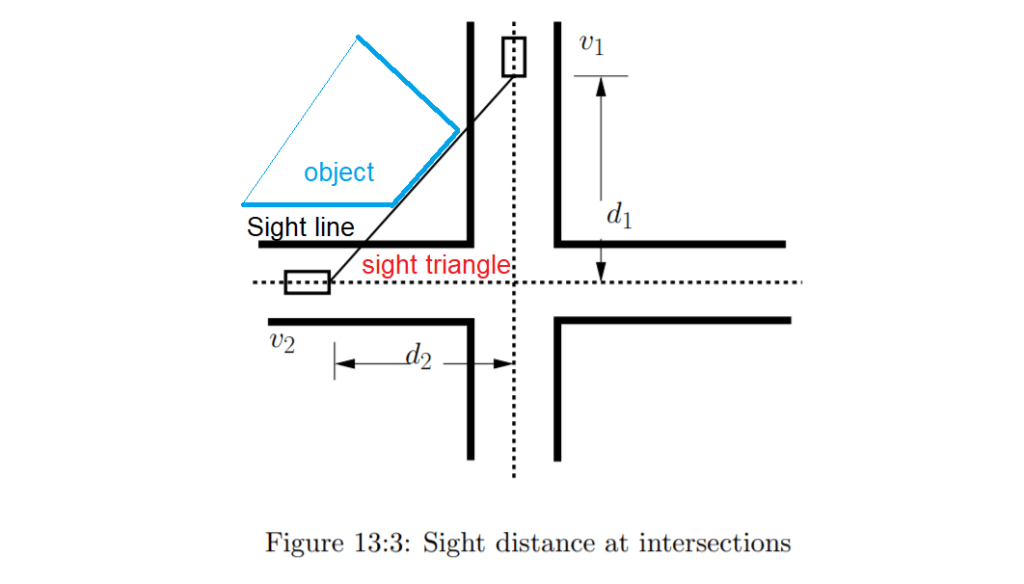Intermediate sight distance (ISD):
- On a horizontal curve, the requirement of overtaking sight distance can not always be satisfied. In such cases overtaking is prohibited by using regulatory signs. To provide an opportunity for overtaking operation on horizontal curves or in restricted areas, we provide intermediate sight distance, i.e. equals to twice of stopping sight distance.
ISD= 2×SSD
- The measurement of the ISD may be made assuming both the height of eye of driver & height of object to be 1.2m.
| Distance | Reaction Time (sec) | Height (metre) | |
| Driver Eye | Object | ||
| SSD | 2.5 | 1.2 | 0.15 |
| OSD | 2 | 1.2 | 1.2 |
| ISD | 2.5 | 1.2 | 1.2 |
| Space Headway | 0.7 | – | – |
Note: This topic is part of the second chapter of Highway Engineering. I suggest reading this topic in the context of the complete chapter: Geometric Design of Highway. If you want to read the entire Highway Engineering, click here: Highway Engineering.
Sight distance at intersections
At intersections where two or more road meets, clear view across the corners should be provided from a sufficient distance to avoid collision of vehicles. The sight distance should be provided in such a way so that driver from both sides can see each other .The area of unobstructed sight formed by the lines of vision is called the sight triangle as shown in
Design of sight distance at intersections may be used on three possible conditions:
• Enabling approaching vehicle to change the speed
• Enabling approaching vehicle to stop
• Enabling stopped vehicle to cross a main road
